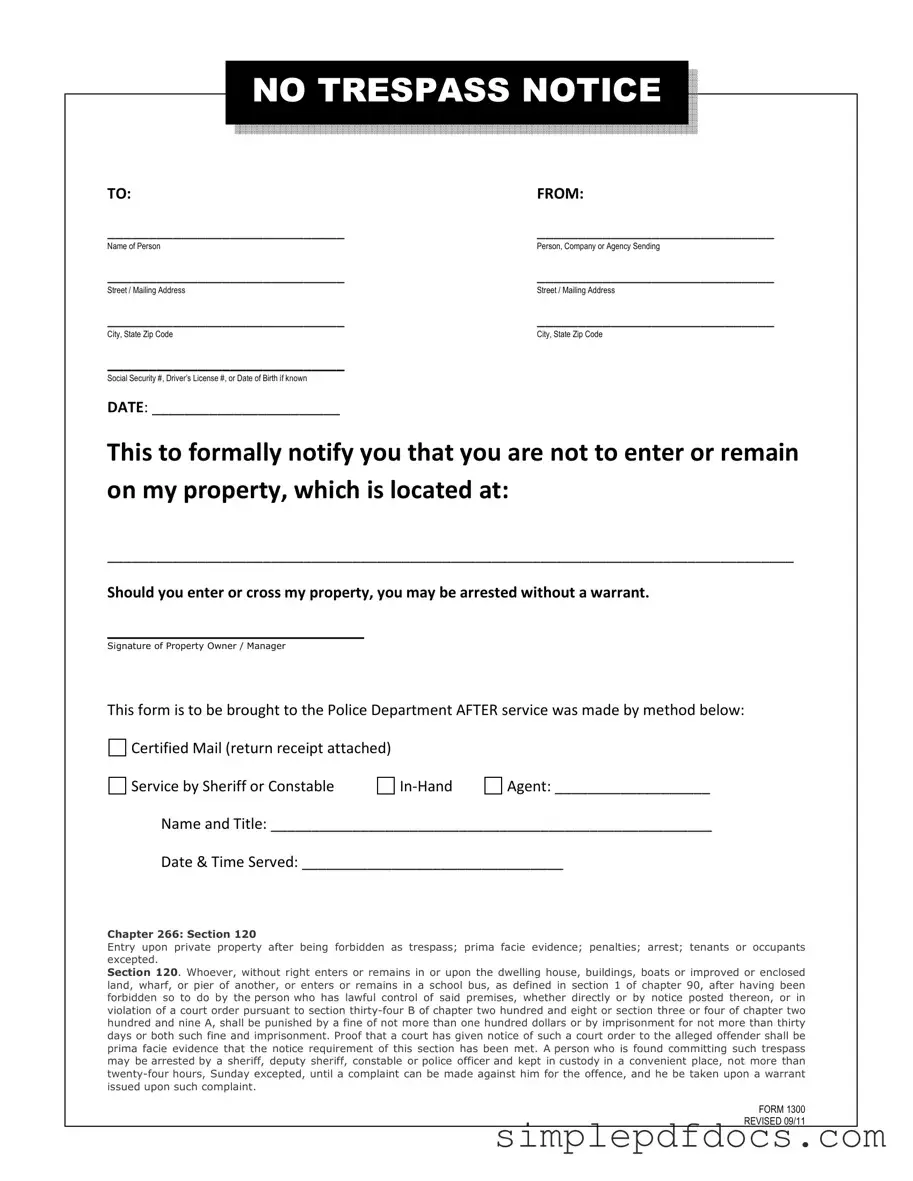When it comes to protecting your property rights, a No Trespassing Letter serves as a crucial tool in communicating your boundaries to others. This letter is not just a simple notification; it carries significant weight and legal implications. It begins with clear identification of both the sender and the recipient, ensuring that there is no ambiguity about who is involved. You will find a designated space for the property address, making it crystal clear where the restrictions apply. The letter explicitly states that unauthorized entry or presence on the property may lead to arrest without a warrant, underscoring the seriousness of the message. Additionally, it outlines the proper methods for serving the notice, such as through certified mail or law enforcement, to ensure that the recipient is fully aware of the restrictions. Lastly, the form includes a section for the agent who delivers the letter, along with the date and time of service, providing a record that can be referenced if necessary. By utilizing this form, property owners can assert their rights while also providing a clear warning to potential trespassers.
